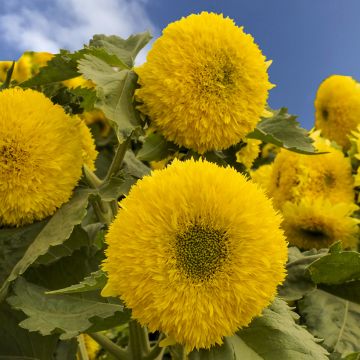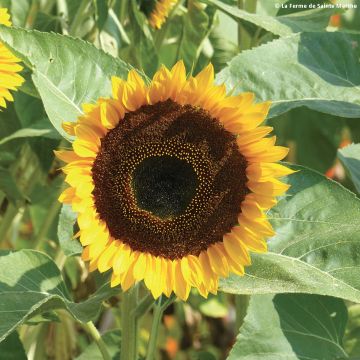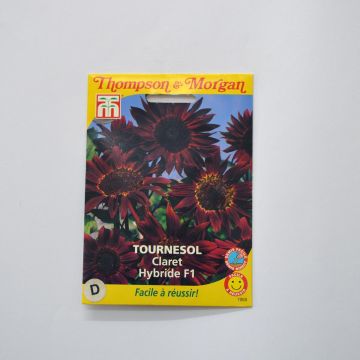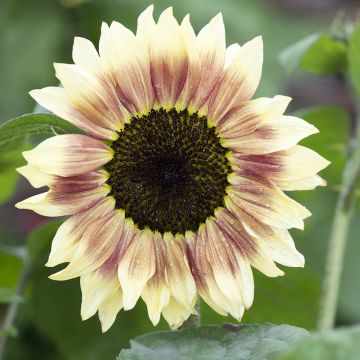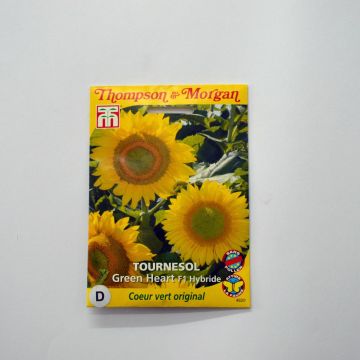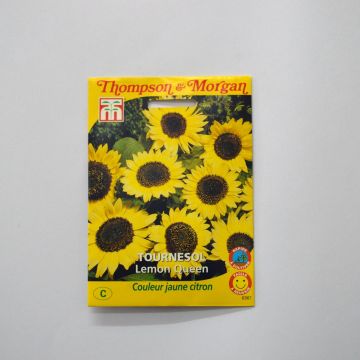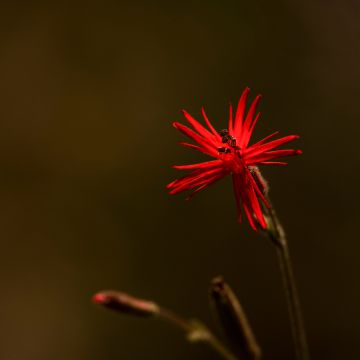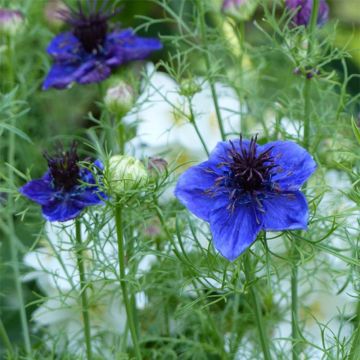Shipping country and language
Your country of residence may be:
Your country of residence is:
For a better user experience on our website, you can select:
Your shipping country:
Andorra
Austria
Belgium
Bulgaria
Canada
Chile
Croatia
Cyprus
Czechia
Denmark
Estonia
Finland
France
Germany
Greece
Hungary
Iceland
Ireland
Italy
Latvia
Lithuania
Luxembourg
Malta
Monaco
Netherlands
Poland
Portugal
Romania
Slovakia
Slovenia
Spain
Sweden
Switzerland
United Kingdom
We only deliver seed and bulb products to your country. If you add other products to your basket, they cannot be shipped.
Language:
French
German
Spanish
English
My Account
Hello
My wish lists
Plantfit
Log in / Register
Existing customer?
New customer?
Create an account to track your orders, access our customer service and, if you wish, make the most of our upcoming offers.


Sunflower Russian Giant Seeds - Helianthus annuus
Sunflower Russian Giant Seeds - Helianthus annuus
Helianthus annuus Russian Giant
Sunflower
Hello, I plan to plant these sunflowers in a rather dry and rocky soil. Would horse manure, dry leaves, or cut grass improve the conditions for the growth and life of the sunflowers?
mélanie, 05/08/2018
Why not try an alternative variety in stock?
View all →Order in the next for dispatch today!
Dispatch by letter from €3.90.
Delivery charge from €5.90 Oversize package delivery charge from €6.90.
More information
This item is not available in your country.
Schedule delivery date,
and select date in basket
This plant carries a 6 months recovery warranty
More information
We guarantee the quality of our plants for a full growing cycle, and will replace at our expense any plant that fails to recover under normal climatic and planting conditions.
Seed-only orders are dispatched by sealed envelope. The delivery charge for seed-only orders is €3.90.

Does this plant fit my garden?
Set up your Plantfit profile →
Description
Helianthus annuus 'Russian Giant' is an impressive variety that features huge yellow blooms with an orange-brown centre. The 3-metre-tall plants are ideal for planting in front of unsightly walls or garden sheds. Sunflowers are popular annuals that are generally direct sown in spring in ordinary, well-drained garden soil.
The Sunflower, or Helianthus annuus in latin, is a large annual plant belonging to the Asteraceae family, native to the Americas. It has long been domesticated for its edible seeds and is now cultivated on a large scale for its oil. 'Russian Giant' is a spectacular selection that rapidly grows to a height of 3 m. It produces large, single flowerheads (capitulum) that measure about 30 cm across. The external petals (technically, ray flowers) are bright golden yellow, arranged around a large orange-brown central disc. The flowering period lasts from July to September. The floral stems are strong and sparsely branched, covered in simple, alternate to opposite heart-shaped green leaves. They are carried on a fairly long petiole and are rough to the touch.
This easy-to-grow plant, with its large seeds and cheerful disposition, is perfect for introducing children to gardening. It is particularly suited to sunny borders and summer bedding schemes. All it requires is a healthy dose of sunshine and moist, well-drained soil. Its flowers make fabulous arrangements combined with fern leaves, goldenrod, statice and carnations for example.
Good to know: Before flowering, sunflowers famously optimize their growth by following the course of the sun in a phenomenon known as heliotropism. All summer long, sunflowers attract pollinating insects and butterflies into the garden, improving its ecosystem and encouraging fruit set in the orchard or vegetable patch. The oil-rich seeds are a favourite with garden birds (nuthatches, tits, finches, sparrows, blackbirds etc.). Harvest them after flowering to provide birds with a valuable food source during the cold winter months.
Cooking with sunflowers:
Sunflower buds, petals and seeds are all edible. Brighten up green salads with a few nutty-flavoured petals. The green buds have a Jerusalem artichoke taste when blanched and tossed in garlic butter. Unhulled seeds can be eaten both raw and grilled.
Flowering
Foliage
Plant habit
Botanical data
Helianthus
annuus
Russian Giant
Asteraceae
Sunflower
Cultivar or hybrid
Other Sunflower seeds
Planting and care
The Sunflower can be sown:
- either in March-April, in pots under shelter, to prepare young plants that can be planted in your flower beds after the last frost.
- or from May to June, after the frost, directly in place. In a sunny spot in your garden. In order to enjoy beautiful fresh flowers throughout the season, we recommend staggering your sowings as much as possible.
Sow Sunflowers from March to April in pots. Sow your seeds in groups of 2 at a depth of 1 cm. Use a good quality potting soil that you will sieve on the surface to bind the seed to its substrate. Before sowing, lightly press the soil with a board. Cover the seeds by sprinkling soil or vermiculite on top, lightly press and water abundantly with a fine rain. Place your pots in a well-lit area, without direct sunlight, at a temperature of 20°C to 25°C. Lower the temperature at night to 17°C to create a beneficial alternation for germination. The seeds will take 21 days to germinate. Keep the soil moist but not excessively during growth.
20 days after the appearance of the young plants, remove the weaker shoot and keep only one per pot.
15 days before their final planting, start gradually acclimating them to a temperature of 15°C. In late May and early June, the temperature will be warm enough in the garden to plant your young plants. Choose a sunny location. Add a good handful of compost to each planting hole. Space your plants 1 meter apart.
The strong growth of the Sunflower will require regular watering. When the plant reaches about 1 meter, watering can be stopped and it can rely on rainwater even if it is scarce.
It takes 75 to 80 days from sowing to flowering.
Protect your seedlings from attacks by snails and slugs, which are fond of these young plants. By planting chives nearby your sunflowers, you will keep aphids away from them.
Sowing period
Intended location
- , onOrder confirmed
Reply from on Promesse de fleurs
Flower seeds
Haven't found what you were looking for?
Hardiness is the lowest winter temperature a plant can endure without suffering serious damage or even dying. However, hardiness is affected by location (a sheltered area, such as a patio), protection (winter cover) and soil type (hardiness is improved by well-drained soil).

Photo Sharing Terms & Conditions
In order to encourage gardeners to interact and share their experiences, Promesse de fleurs offers various media enabling content to be uploaded onto its Site - in particular via the ‘Photo sharing’ module.
The User agrees to refrain from:
- Posting any content that is illegal, prejudicial, insulting, racist, inciteful to hatred, revisionist, contrary to public decency, that infringes on privacy or on the privacy rights of third parties, in particular the publicity rights of persons and goods, intellectual property rights, or the right to privacy.
- Submitting content on behalf of a third party;
- Impersonate the identity of a third party and/or publish any personal information about a third party;
In general, the User undertakes to refrain from any unethical behaviour.
All Content (in particular text, comments, files, images, photos, videos, creative works, etc.), which may be subject to property or intellectual property rights, image or other private rights, shall remain the property of the User, subject to the limited rights granted by the terms of the licence granted by Promesse de fleurs as stated below. Users are at liberty to publish or not to publish such Content on the Site, notably via the ‘Photo Sharing’ facility, and accept that this Content shall be made public and freely accessible, notably on the Internet.
Users further acknowledge, undertake to have ,and guarantee that they hold all necessary rights and permissions to publish such material on the Site, in particular with regard to the legislation in force pertaining to any privacy, property, intellectual property, image, or contractual rights, or rights of any other nature. By publishing such Content on the Site, Users acknowledge accepting full liability as publishers of the Content within the meaning of the law, and grant Promesse de fleurs, free of charge, an inclusive, worldwide licence for the said Content for the entire duration of its publication, including all reproduction, representation, up/downloading, displaying, performing, transmission, and storage rights.
Users also grant permission for their name to be linked to the Content and accept that this link may not always be made available.
By engaging in posting material, Users consent to their Content becoming automatically accessible on the Internet, in particular on other sites and/or blogs and/or web pages of the Promesse de fleurs site, including in particular social pages and the Promesse de fleurs catalogue.
Users may secure the removal of entrusted content free of charge by issuing a simple request via our contact form.
The flowering period indicated on our website applies to countries and regions located in USDA zone 8 (France, the United Kingdom, Ireland, the Netherlands, etc.)
It will vary according to where you live:
- In zones 9 to 10 (Italy, Spain, Greece, etc.), flowering will occur about 2 to 4 weeks earlier.
- In zones 6 to 7 (Germany, Poland, Slovenia, and lower mountainous regions), flowering will be delayed by 2 to 3 weeks.
- In zone 5 (Central Europe, Scandinavia), blooming will be delayed by 3 to 5 weeks.
In temperate climates, pruning of spring-flowering shrubs (forsythia, spireas, etc.) should be done just after flowering.
Pruning of summer-flowering shrubs (Indian Lilac, Perovskia, etc.) can be done in winter or spring.
In cold regions as well as with frost-sensitive plants, avoid pruning too early when severe frosts may still occur.
The planting period indicated on our website applies to countries and regions located in USDA zone 8 (France, United Kingdom, Ireland, Netherlands).
It will vary according to where you live:
- In Mediterranean zones (Marseille, Madrid, Milan, etc.), autumn and winter are the best planting periods.
- In continental zones (Strasbourg, Munich, Vienna, etc.), delay planting by 2 to 3 weeks in spring and bring it forward by 2 to 4 weeks in autumn.
- In mountainous regions (the Alps, Pyrenees, Carpathians, etc.), it is best to plant in late spring (May-June) or late summer (August-September).
The harvesting period indicated on our website applies to countries and regions in USDA zone 8 (France, England, Ireland, the Netherlands).
In colder areas (Scandinavia, Poland, Austria...) fruit and vegetable harvests are likely to be delayed by 3-4 weeks.
In warmer areas (Italy, Spain, Greece, etc.), harvesting will probably take place earlier, depending on weather conditions.
The sowing periods indicated on our website apply to countries and regions within USDA Zone 8 (France, UK, Ireland, Netherlands).
In colder areas (Scandinavia, Poland, Austria...), delay any outdoor sowing by 3-4 weeks, or sow under glass.
In warmer climes (Italy, Spain, Greece, etc.), bring outdoor sowing forward by a few weeks.








